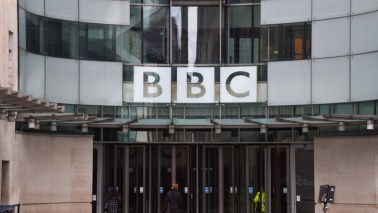 Oh, how Labour enjoy misleading the public about their record on the public finances. Ed
Miliband did it a couple of weeks ago, with some very loose rhetoric about how the previous government had
“paid down the debt”. And now Alan Johnson’s at it, with a fiery speech at the RSA which
reheated many of the themes in his recent New Statesman article.
Oh, how Labour enjoy misleading the public about their record on the public finances. Ed
Miliband did it a couple of weeks ago, with some very loose rhetoric about how the previous government had
“paid down the debt”. And now Alan Johnson’s at it, with a fiery speech at the RSA which
reheated many of the themes in his recent New Statesman article.
The passage that struck me was this:
Some points:“In 2007/08 as the crisis hit, we have the second lowest debt level in the G7 reduced by 14 percent in the 10 years we’d been in office… …The year before the crisis hit we were borrowing 2.4 percent of GDP compared to the 3.4 percent we inherited from Ken Clarke.”
1) Second lowest debt level in the G7. Johnson can have that – although here the deception is in what he doesn’t say. By way of an explanation, I’ll hand you over to the
IFS, writing in April:
Johnson should realise this, not least because he’s got his figures from that very same IFS report. Turn to the table on page 12 of this pdf, and you’ll find the 2.4 percent and 3.4 percent figures that he references in his speech – but these have since been revised by the Treasury to 2.6 percent and 2.8 percent respectively. In other words, the Shadow Chancellor is citing out-of-date figures. A tip for him: the latest public finances figures are released each month, and are available here.“Looking at the UK’s debt levels, in 2007 we had the second lowest level of debt in the G7 (behind Canada), as Mr Brown has been fond of pointing out. However, if we look at a broader set of countries, the comparison is less flattering: we had the eleventh highest level of debt (or seventeenth lowest) when compared with the other 26 OECD countries for which data are available. Between 1997 and 2007, 16 OECD countries (out of 23 for which data are available) experienced larger declines in their ratio of debt to national income than the UK (using the OECD’s measure of “general government net financial liabilities”, which differs somewhat from the Treasury’s preferred measure, “public sector net debt”). On the eve of the financial crisis, the UK had one of the largest structural budget deficits among either the G7 or the OECD countries and a higher level of public sector debt than most other OECD countries, though lower than most other G7 countries. Most OECD governments did more to reduce their structural deficit during the period from 1997 to 2007 than Labour did. This fiscal position formed the backdrop to the financial crisis.”
2) Debt “reduced by 14 percent in the 10 years we’d been in office”. Erm, what? Please could Alan Johnson point out the 14 percent drop across ten years in this graph of real terms debt across the Labour years:

Needless to say, real terms debt was actually higher in 2007/08 than in 1997/08. So what about debt as a ratio of GDP (a measure that I have qualms with in this context)? Even that fell only by 4.7 percentage points across the decade to 2007/08:

The only explanation I can think of is that Johnson is expressing the 4.7 percentage point drop as a percentage of the debt level in 1997/98 – but this is dodgy statistical territory; should by no means be described as a reduction in “debt levels”; and, by my sums, comes out at closer to 11 percent. If anyone can suggest any alternatives, then do shout out. The comments section is yours.






Comments